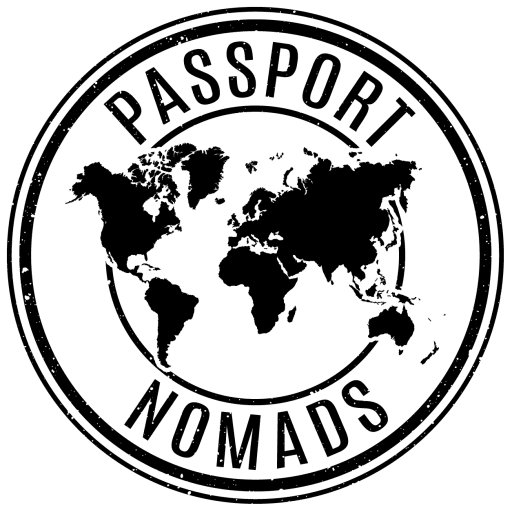This is the only safari packing list that you need for your trip. We read so many different pieces of information but this is what you really need to take!
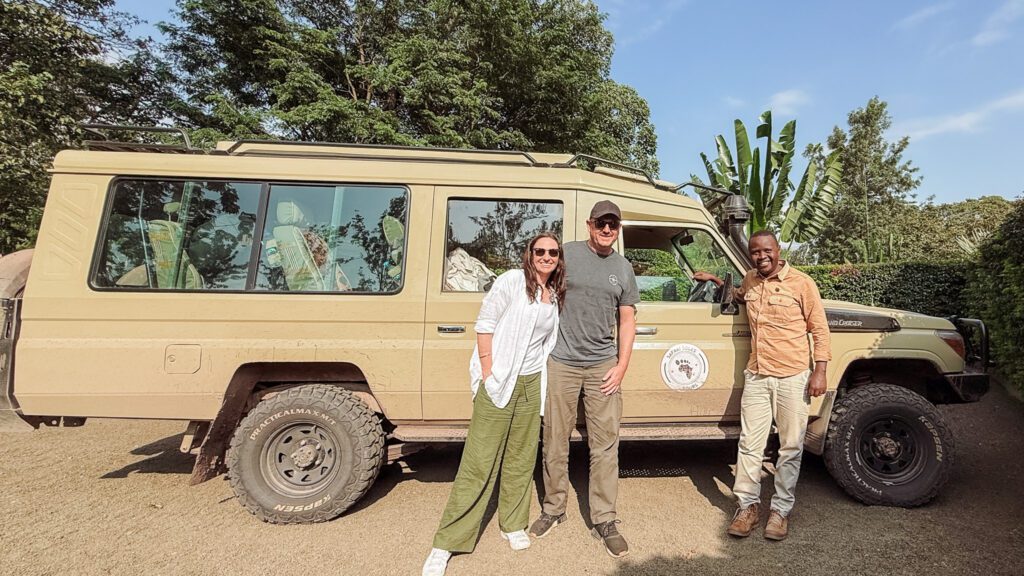
All our blog posts contain affiliate links that help us keep our blog running at no extra cost to you! When you click on our links to book accommodation, activities or transport we earn a very small commission. Clicking on our links to book your accommodation or activities costs no extra to you but helps to keep our blog online!
Tanzania Serengeti Safari
We chose to do a Tanzania Serengeti Safari which went to Tarangire National Park, Serengeti National Park and the Ngorongoro Crater National Park. These environments were all quite different and offered something new at each one. They also required slightly different items of clothing, on a safari layers are key. You will find the weather at the Ngorongoro Crater is always more chilly in the morning and quite cold at night. The day time can be more warm. That is just one location, others are all a little different, check our list below of what we took with us and what we regret taking! This tour was honestly excellent and we have no regrets! You can read our best safari in Africa blog which shows what we did and saw, it was more incredible than we could have imagined!
Best time to visit the Serengeti:
We wanted to go in the best time for the weather, animals and also the great migration. We chose to go in July (10th to 17th July) as it seemed to be a good fit for us. The weather was excellent, slightly cool but not cold, blue skies and almost no rain. The animals were plentiful and the great migration was definitely on its way. This packing list is based on our experience during this time.
Colours
Consider the colours you are packing also when doing a safari. You want to stick to neutral colours and avoid blues or blacks as they can attract the tsete fly which bites. Mike did wear black shirts and didn’t have a problem with the fly although our guide was bitten, apparently the fly is worse in Tarangire. We had no problem at all with it. Regardless we would still recommend wearing green, beige, white, brown colours as you will blend into the landscape better. Almost everyone will be wearing these colours as will the guides.

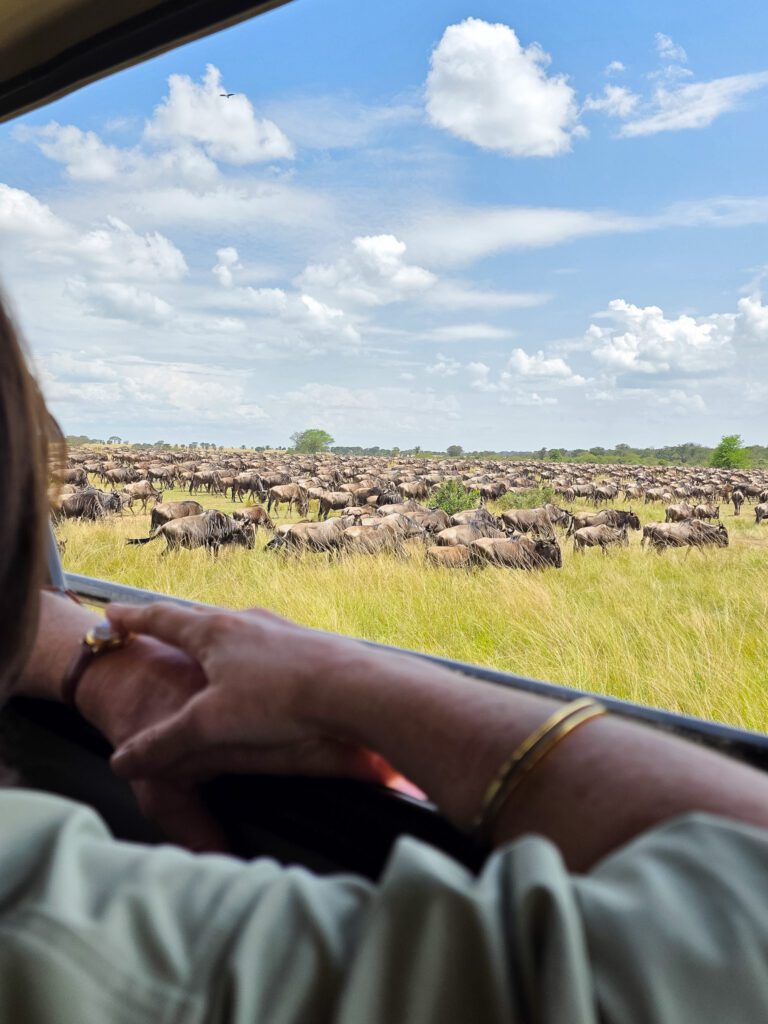
What bag to take?
We saw lots of people with roller bags and it was fine but we prefer to travel with our Osprey backpacks. They can fit a lot in and they are really well organised with lots of handles and straps to keep the pack tight. We also use packing cubes on every trip which is a must for organisation and less wasted space. If you are flying into the Serengeti you will need to consider that they do not allow large baggage and lightweight or small backpack style bags may be best.
Our safari guide had a large piece of material that he used in the boot of his car to carefully wrap up our bags each day so they didn’t get dusty. There are staff at each lodge or camp that will assist to get your bags to your room or tent as well. We bought bag covers thinking they would get dirty but they weren’t needed at all.
Safari Packing List:
Clothing
Layers are the most important thing to consider here as some locations are hot and others will be cool, particularly in early mornings or evenings. We did an 8 day safari, 5 of which were spent out on actual safari with one a Kilimanjaro foothills adventure and the other 2 being day 1 pick up and day 8 drop off.
The first thing you need to know is that you can rewear some of the base clothing you take. It is dusty but we didn’t find it overwhelmingly so. When driving over the long dusty distances we put windows up while passing cars and tried to keep the dust out as much as possible. Comfort is also key here. You will be sitting for hours on end so wearing anything too tight or restrictive is not going to work. I have linked all the items I wore so you can check out if they suit you.
Bottoms
I took one pair of denim shorts, a pair of linen shorts, a pair of linen pants and a stretchy midi skirt. This gave me a range of options for warm days and the chilly mornings. I used the skirt for dinner when we had time to shower prior although I did also wear it on one game drive and it was so comfortable!
Tops
For the 5 main safari days I took 2 singlets a short sleeve top and 2 long sleeve tops. I made sure that one of my long sleeve tops was a sun safe fabric so I wasn’t getting burnt through windows in the jeep. I also took a thin and light weight polar fleece zip up jacket for when it was chilly. This padded jacket was perfect for the chilly nights.
I packed my lightweight rain jacket also which came in handy when hiking the foothills of Mt Kilimanjaro when it started to rain!
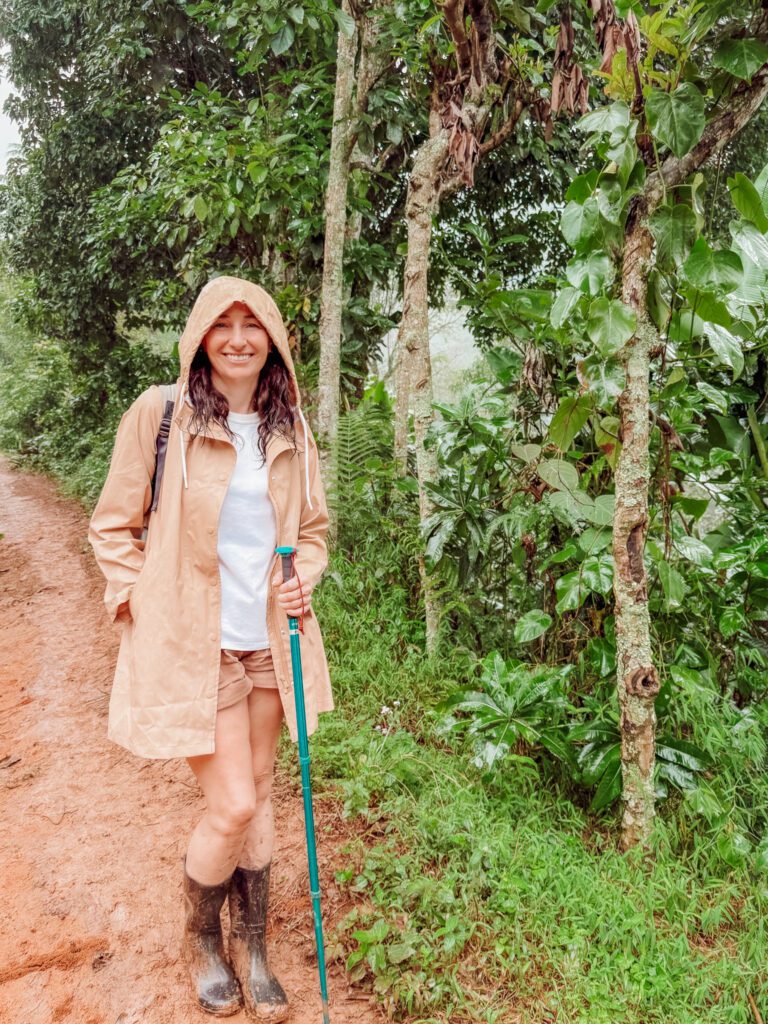
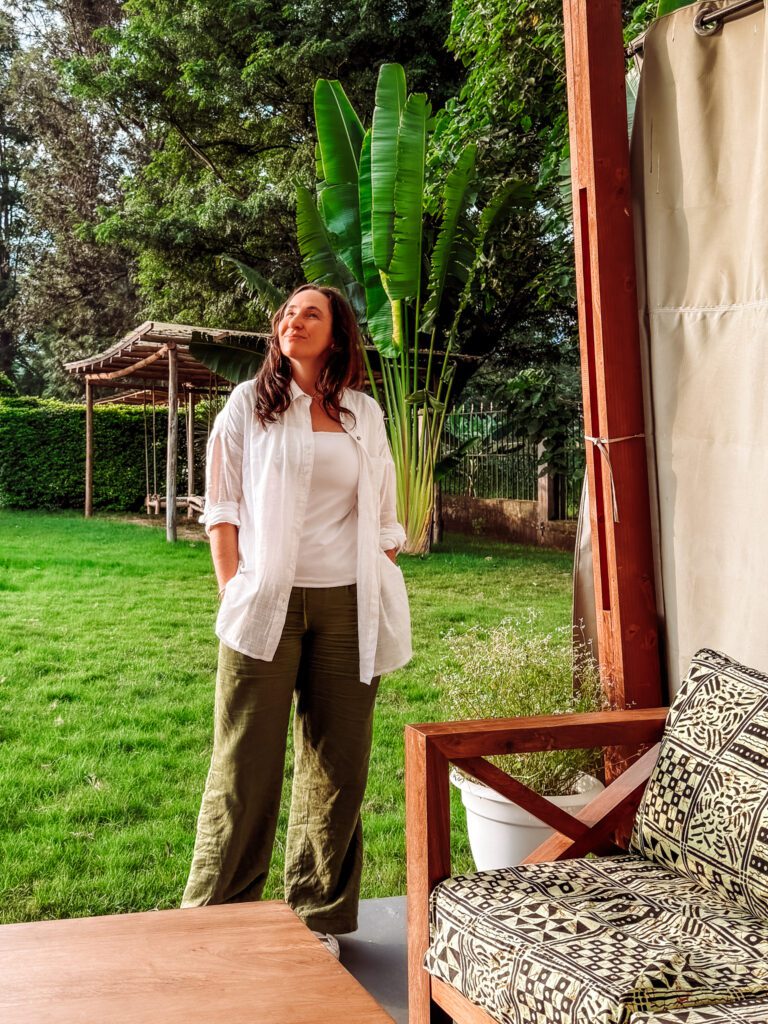
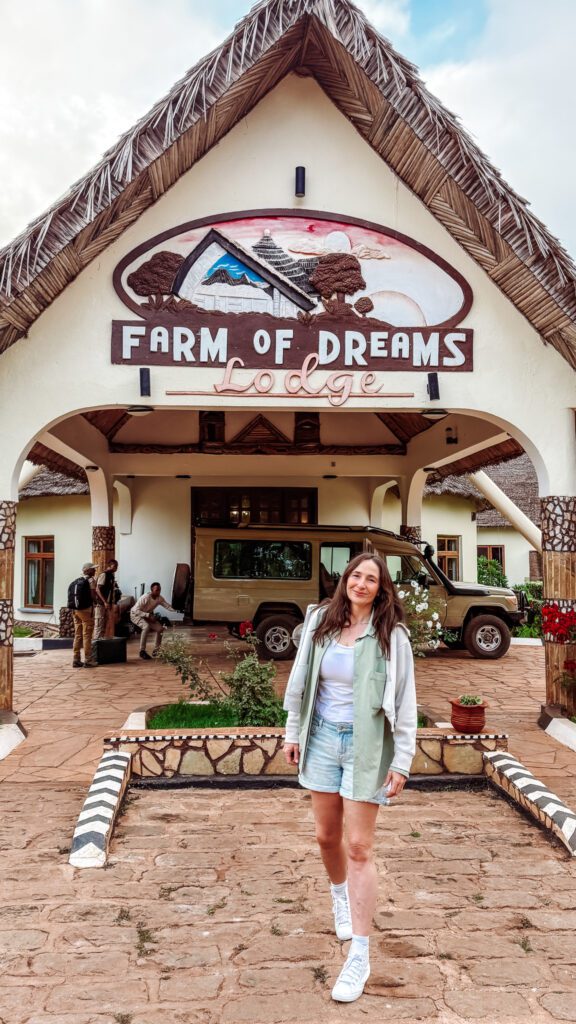
Underwear
You can get washing done at the lodges but you may run out of time as you are moving around each day, honestly bring enough underwear for each day you are on safari. I highly recommend a sports bra as well as the roads can be very bumpy!
Shoes
This was one of the hardest decisions for me. I wanted to take hiking boots and they would have been great except for the fact that we were continuing on our trip after safari to a beach destination and then city destinations, none of which hiking boots suit. We also don’t travel with large suit cases so one pair of shoes that could do it all was what I needed…and I took my Converse! My Converse high tops were all I needed as I was sitting in a jeep for most of the day, the rest of the time was spent walking over small shrubs and grasses at camps or picnic spots.
I packed a pair of thongs (flip flops) in my bag incase I needed them but I only used them at the hot springs on our last day. You may want them more if you are staying somewhere with a pool for a few nights though. If you are planning a walking safari then I think hiking boots would be very useful, likewise anything involving hiking at Mt Kilimanjaro.
On our day that we did do a hike in the Kilimanjaro foothills it was really muddy and our guide provided us with grippy rubber gumboots and we were eternally grateful for this! Mike wore his Adidas sneakers and was fine as well. We saw lots of people in hiking boots and sneakers, the most important thing is to have covered footwear. You will get thorns in your feet or if unfortunately you came across a small snake or spider (we didn’t see any!). It is smart to have covered feet when walking in the bush…this is an Australian rule but I think it applies in this is situation too!
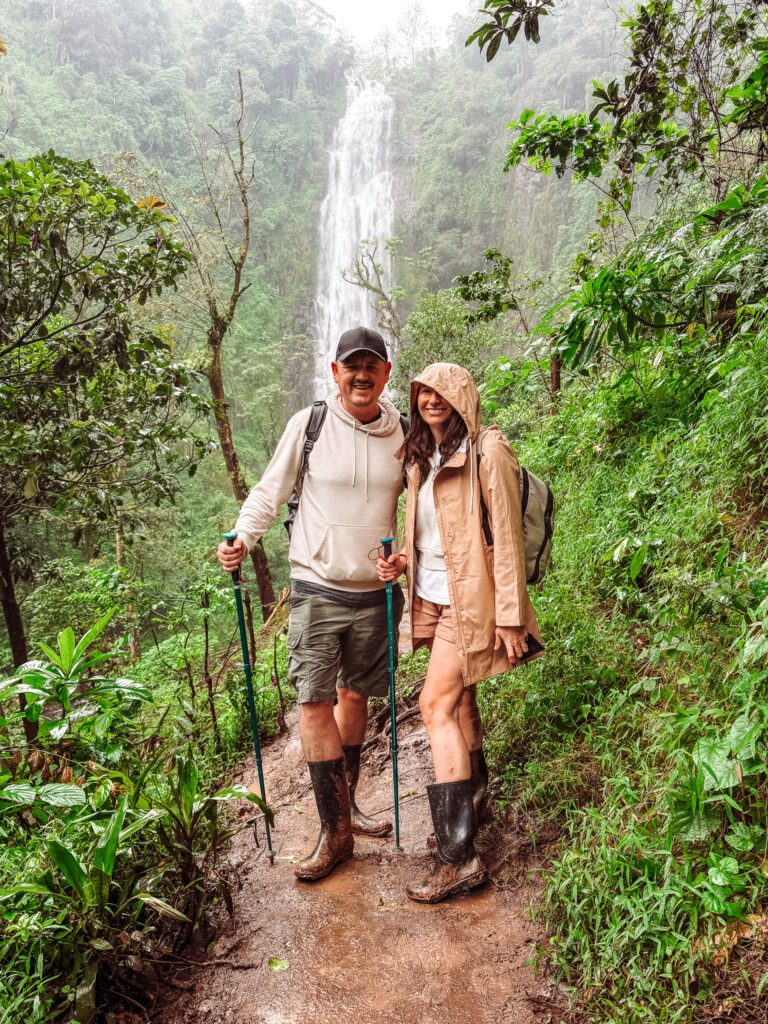
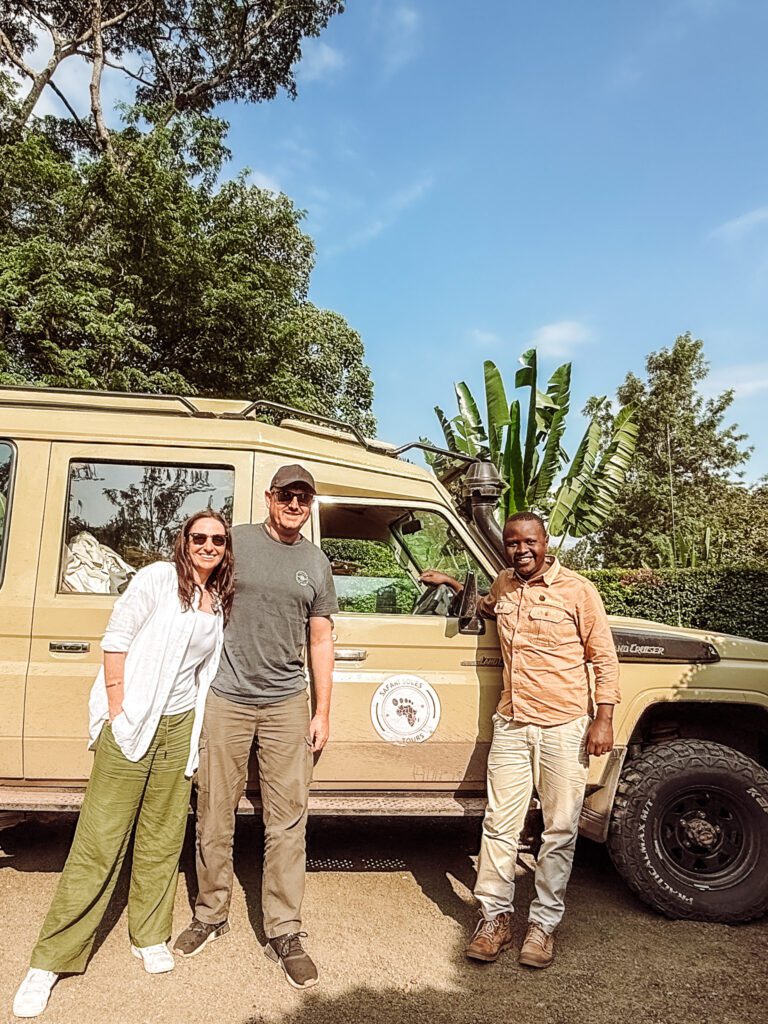
Headwear
You can definitely take a sun hat or cap. Mike wore his cap but I found it was not really needed in the jeep as the roof gave pretty good shade. A gorgeous hat like the Will and Bear ones is great for photos though!
Accessories
Definitely take sunglasses, they would be the first thing I pack. I took a neck gator for the dust as I have a dust allergy and this helped me. We also packed gloves, just small thin ones and I used them once while at Ngororo in the evening and morning. I took simple jewellery, nothing too big that would be cumbersome getting in and out of the jeep. I didn’t take anything too expensive as you would never find anything you dropped in the Serengeti it is too vast!
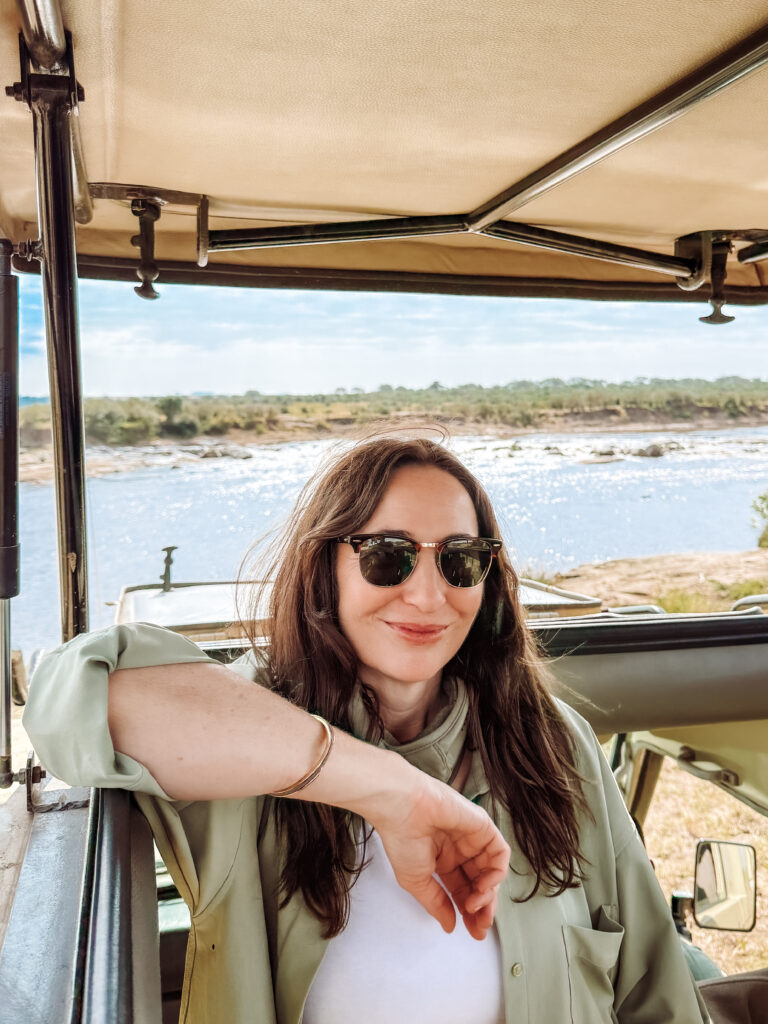
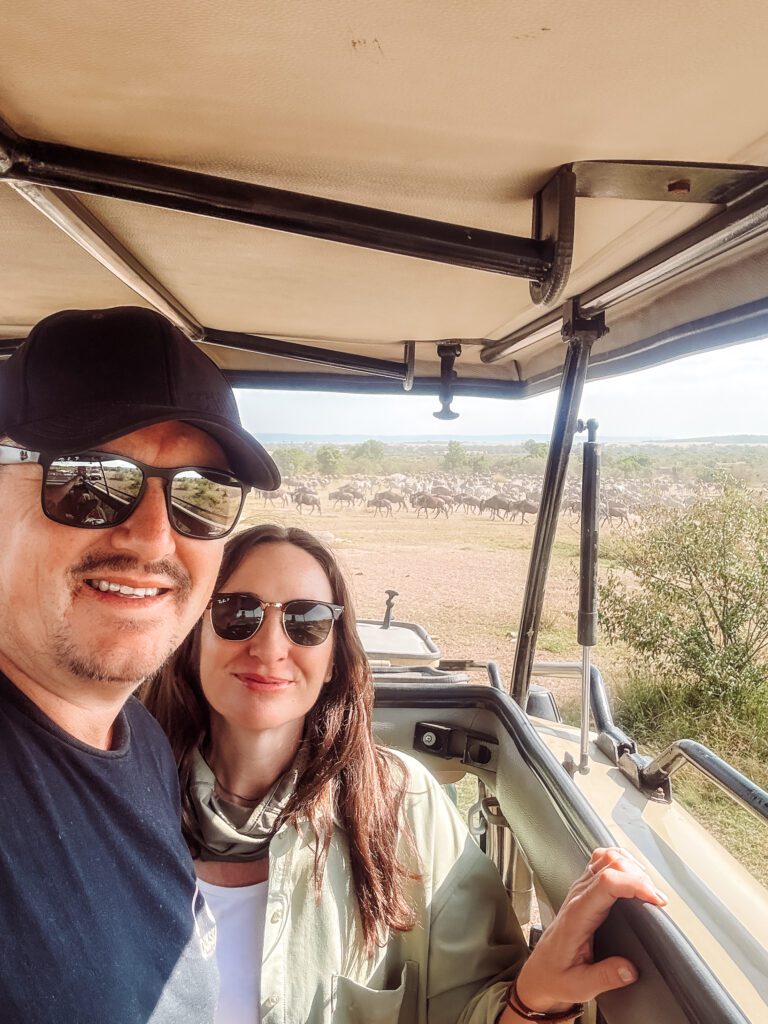
Electrical Items
We took our Sony camera, a 40mm lens and a 70-200mm lens. This was a great set up for most shots although I tended to leave the 70-200mm on the camera and use my phone for anything wider as I was concerned about dust getting in to the body. I took lots of lens wipes, a UV lens filter and dust blower. I kept all my camera gear in microfibre wraps and inside a camera pouch just pulling it out every time we stopped for animals. The 70-200mm was an excellent lens and I loved it, the range was suitable for most situations. On the rare occasion that I was just out of reach it would have been nice to have a 400mm but I don’t think it to be absolutely necessary as the guides are great at getting you within a good distance.
We each had our phones as well as a DJI Pocket and DJI Action for video. Mike got these binoculars and they were excellent! There were some in the jeep to use but it was nice to have our own. We took 3 x 512GB SD cards and a storage device. Travel adapters are a must, this is the one needed for Tanzania and back up power banks.
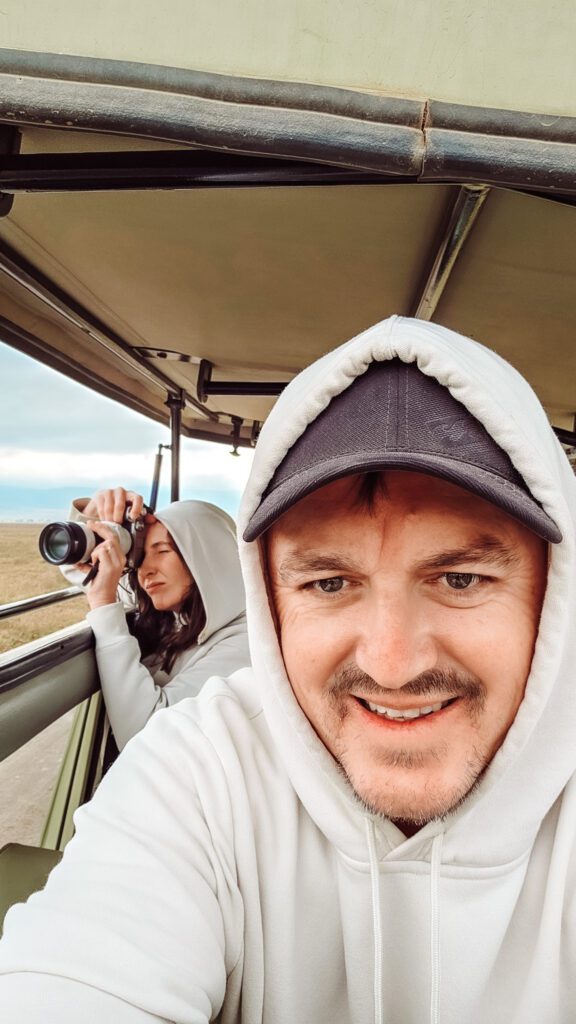
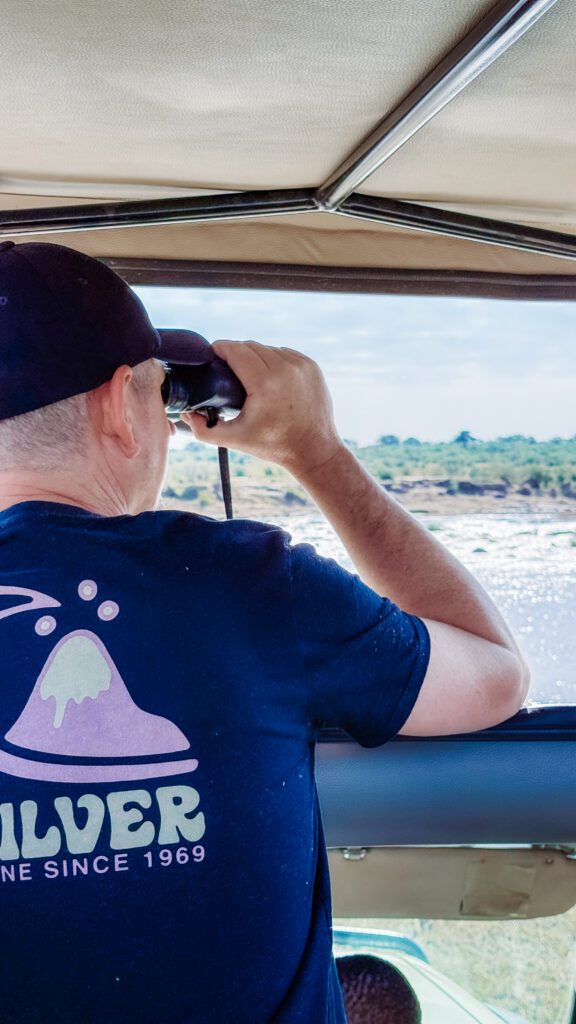
Extra Items
We took our Larq water bottles which are awesome as you can use the filter straw and also the UV cleaning top! Highly recommend these, we have used them on so many different trips and they never fail. I suggest you take any and all medicines you may need as you wont find them available, I packed my usual medicine pouch with allergy medicine, pain relief for headaches, gastro stop, malaria medicine, dry eye drops, antiseptic wipes, bandaids, a bandage wrap, gloves and tape. This may sound like a lot but I take this same kit on most trips as there is nothing worse than hurting yourself or getting sick and needing something and not having it. We also took sunscreen and made sure to use it each day on our faces.
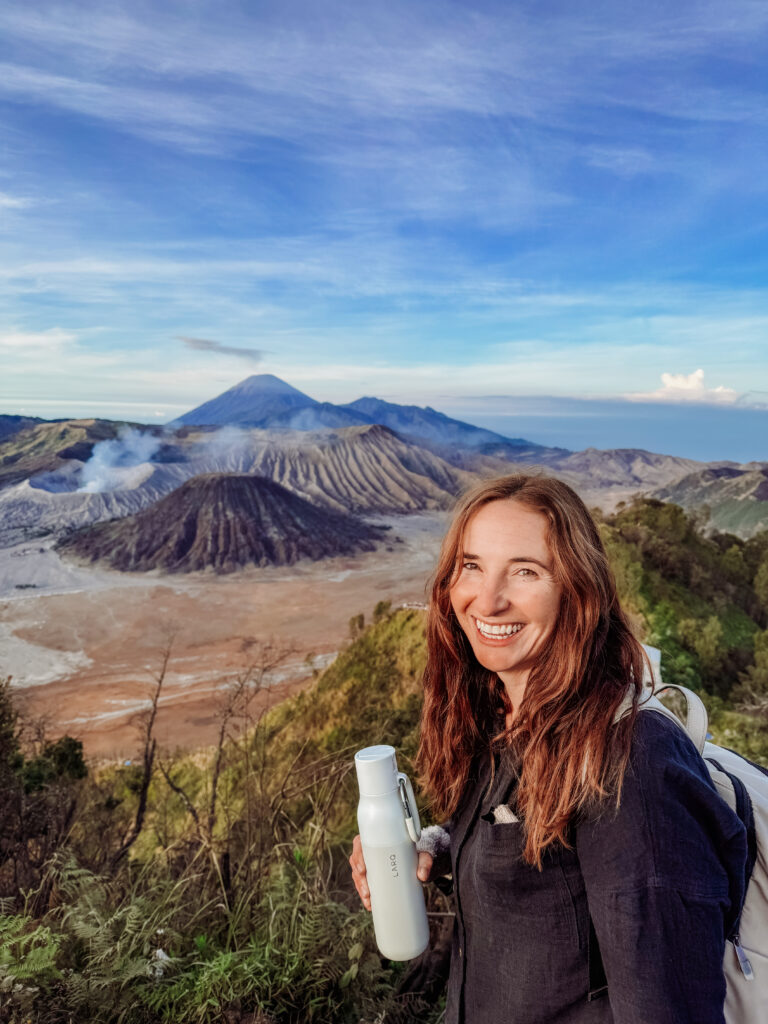

Make sure you have your passport and travel documents on hand and easily accessible, you will need visas for Tanzania and a yellow fever injection passport. We use this passport holder and it is really handy! I also love keeping all our travel paperwork together in a folder to make it more manageable.
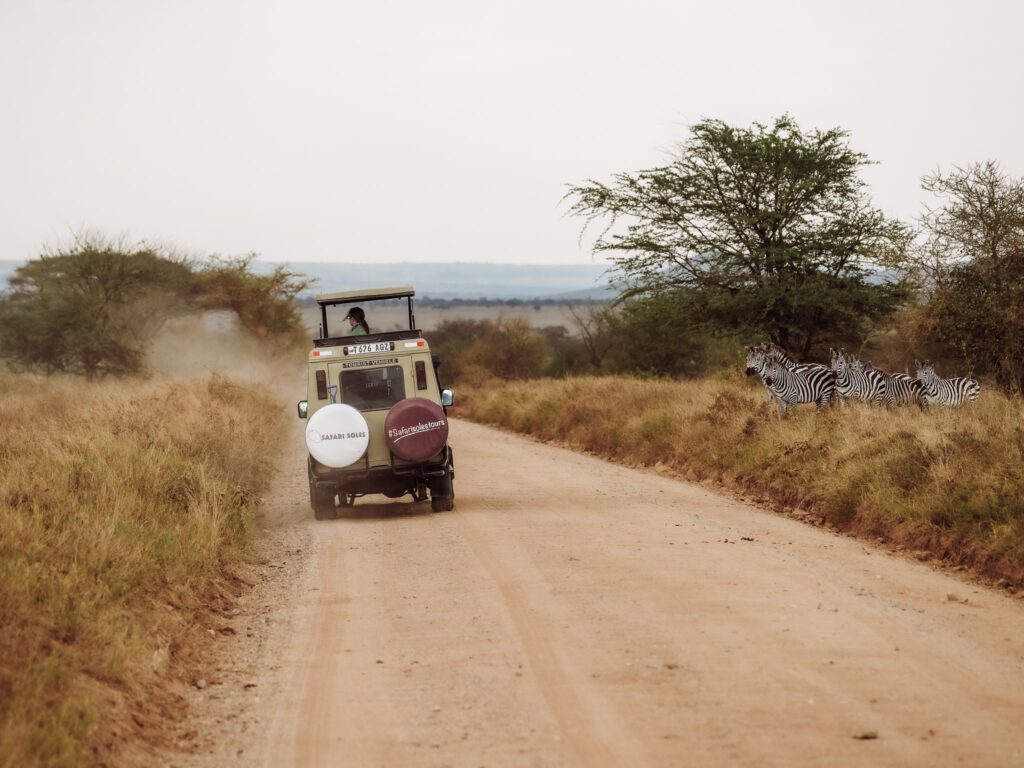
Are You Booking a Trip Soon? These are the sites we trust!
These are the sites we use to book, they are our affiliate links and by clicking through you will help us earn a few cents to keep our website up online. We really appreciate it!
1. Book Your Flights
We will always check and book through Trip.com they have great deals!
2. Book Your Accommodations
We always check Booking.com, Expedia, Klook and Trip.com. They all have great deals and sometimes are better in different continents, for example we almost used Trip and Klook exclusively in Asia and Booking.com always in Europe!
3. Buy your E-sim!
E-sims have changed the game in communication while travelling. They are cheap and easy to use, we never go without them. Our current favourite is Yesim!
4. Book Your Tours & Experiences
I usually use and recommend Get Your Guide, Klook and Viator to book tours and activities. THey also have shuttle options to and from airports which is great. I love the real reviews you can check and we have never had a problem with them!
5. Book Your Rental Car
Self-driving is my favourite way to explore most destinations, we use Rental Cars.
6. Don’t Forget Travel Insurance
Travel insurance is a must, Mike travelled for years without it but now we see that was a little crazy! We feel so much better knowing we have a backstop for cancelled flights, delayed luggage, sickness on the road and wouldn’t be without it! Safety Wing is great, especially for frequent travellers.
7. Airport Lounge Access is a must!
Use Priority Pass to access to 1,400+ VIP lounges and airport experiences worldwide.
Where Next?
This African Serengeti Safari is the best safari in Africa!
Why Choose a Tanzania Serengeti Safari?
First time safari tips, what you need to know!
Best gluten free Serengeti Safari
What to do in Mt Fuji in one day
Things to do in Hakone Day Trip
What to do in Langkawi, Malaysia for 3 days.
